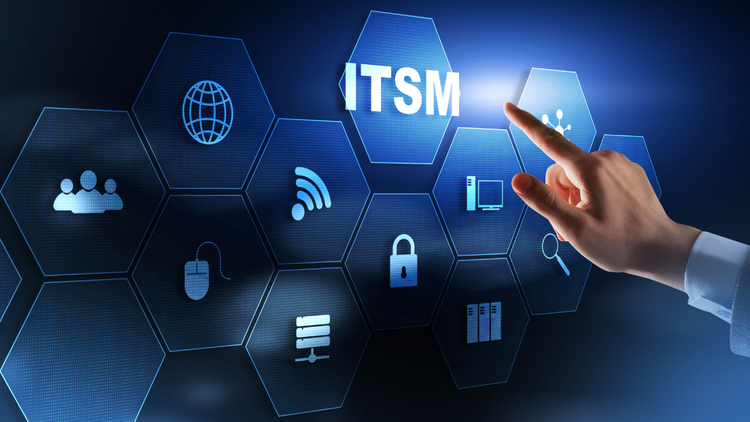ITSM
Empowering Organizations with Effective ITSM Solutions
ITSM is crucial for organizations to ensure the effective and efficient delivery of IT services, aligning IT with business objectives, and meeting customer expectations.
ITSM
ITSM stands for Information Technology Service Management. It is a set of practices and processes for managing and delivering IT services to meet the needs of an organization or its customers. ITSM aims to align IT services with the needs of the business and ensure that IT services are delivered efficiently, effectively, and in a timely manner.
ITSM encompasses a range of activities, including service design, service transition, service operation, and continual service improvement.
ITSM is important because it helps organizations to improve the reliability, availability, and performance of IT services, which in turn can lead to better business outcomes. It also helps to reduce costs, minimize downtime, and improve customer satisfaction.

Some common ITSM processes include incident management, problem management, change management, release management, and service level management. These processes help IT teams to respond to incidents and service requests quickly, manage changes in a controlled and predictable manner, and continuously improve the quality of IT services.
The Benefits Of A ITSM
Improved Service Quality
ITSM frameworks and best practices help organizations deliver IT services that meet or exceed customer expectations
Enhanced Efficiency & Productivity
ITSM streamlines IT processes, automates routine tasks , reduced operational costs, and eliminates manual efforts
Increased Business Value
ITSM aligns IT services with business objectives, enabling IT to contribute directly to the success of the organization
Faster Problem Resolution
ITSM processes, such as incident and problem management, enable swift identification, prioritization, and resolution of issues
Better Decision Making
ITSM provides organizations with valuable data and insights through metrics, reporting, and analysis
Customer Satisfaction & Experience
ITSM focuses on delivering excellent customer experiences and ensuring customer satisfaction
Other Key Highlights
Customer-Centric Approach: ITSM emphasizes aligning IT services with the needs and expectations of customers. It focuses on delivering value and ensuring customer satisfaction through effective service management.
Process Orientation: ITSM promotes the adoption of well-defined and documented processes for managing IT services. These processes cover areas such as incident management, problem management, change management, and service level management. They help streamline operations, improve efficiency, and reduce errors.
Service Lifecycle Management: ITSM follows a lifecycle approach to managing IT services, starting from the strategy and design phases, transitioning into service operation, and continually improving through the continual service improvement phase. This lifecycle perspective ensures a holistic and proactive approach to managing services.
Continuous Improvement: ITSM emphasizes the importance of continually evaluating and improving IT services. Through the continual service improvement (CSI) process, organizations identify areas for enhancement, set improvement targets, measure performance, and implement changes to drive ongoing improvements in service quality, efficiency, and customer satisfaction.
Governance and Compliance: ITSM frameworks, such as ITIL and COBIT, provide guidance on governance and control of IT processes. These frameworks help organizations ensure that IT services are delivered in a controlled and compliant manner, addressing security, regulatory, and legal requirements.
Collaboration and Communication: ITSM promotes collaboration and effective communication among IT teams, departments, and stakeholders. This facilitates the sharing of knowledge, resolution of issues, and alignment of efforts to deliver seamless IT services.
Automation and Technology Enablement: ITSM leverages automation and technology tools to streamline processes, improve efficiency, and enhance service delivery. ITSM tools, such as service desk systems, configuration management databases (CMDB), and monitoring solutions, help automate routine tasks, track incidents and changes, and provide valuable data for decision-making.
Business Alignment: ITSM aims to align IT services with the strategic objectives and priorities of the business. By understanding business requirements and focusing on value delivery, ITSM ensures that IT supports and contributes to the overall success of the organization.
Metrics and Reporting: ITSM emphasizes the use of metrics and reporting to measure performance, monitor service levels, and identify areas for improvement. By analyzing data and generating insights, organizations can make informed decisions and drive continuous service improvement.
Customer Experience and Satisfaction: ITSM places a strong emphasis on delivering excellent customer experiences and ensuring customer satisfaction. By focusing on customer needs, promptly resolving issues, and providing efficient service delivery, ITSM helps build trust and long-term relationships with customers.


